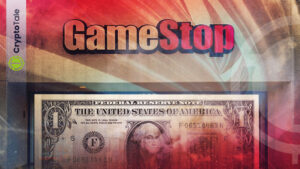
From hacks and rug pulls to the collapse of tokens, cryptocurrency exchanges, and hedge funds, billions of dollars were wiped out of the ecosystem in 2022, prompting regulatory and criminal investigations.
Non-fungible tokens (NFTs), like every other sector of cryptocurrency, have felt the effects of 2022’s crypto winter, with sales plummeting and the value of blue-chip NFTs being axed. NFT sales were approximately $534 million last month, compared to $2.77 billion in NFT sales in December 2021.
NFT sales remained relatively strong in the first half of 2022, with users spending $2.7 billion on minting NFTs during that time period. Despite a strong start to the year, there have been some major negative trends in the NFT space. When compared to the previous year, NFT sales were down by more than 90% in nearly every metric in October 2022, including volume and price.
Floor prices for BAYC fell below $100,000 earlier this year, only to recover, with the cheapest Bored Ape recently selling for 73 Ether on OpenSea.
Trading volume on OpenSea, one of the most active NFT markets, fell from $3 billion in September 2021 to $350 million in September 2022.
There were both bright spots and significant roadblocks in the market’s turmoil. We saw increased use of NFT artwork to build brands and projects, as well as IP consolidation in a decentralised world and disagreements over the nature of NFT creator royalties ever since Magic Eden moved to Optional Royalty Model .
More Brands in the Game
Twitter announced in January 2022 that users would be able to use NFTs as profile pictures via Twitter Blue. Meta swiftly followed Twitter’s lead and added a feature similar to Twitter’s for Instagram and Facebook.
Meta also announced that the platform would launch an “end-to-end toolkit,” for creators to make “digital collectibles” and sell them both on and off Instagram.
BAYC’s decentralised IP concept really took off in 2022 with high-profile projects such as Snoop Dogg and Eminem’s music video and MTV VMAs performance, the launch of Bored Ape-themed restaurants and drink brands, and much more.
Celebrities continue to be involved in the NFT space, with Snoop Dogg recently collaborating with Mobland, a mafia-themed metaverse, to create digital weed farm NFTs. The weed farms were developed as a part of NFT 3.0, the third generation of NFTs.
Despite the crypto winter, not just, Celebrities but also major brands such as Nike, Adidas, Gucci, Starbucks, Instagram, Budwiser, and Tiffany, among others, have continued to show interest in the sector.
What the Future Holds
2023 will see brands looking for more practical and immersive ways to use NFTs, like Starbucks’ Odessy. Likewise, many designers, including Rebecca Minkoff and Karl Lagerfeld, are using NFTs as tokens to gain access to pre-release sales or in-person events. Sneaker companies like New Balance and Nike use them to track and authenticate physical products.
According to a Cointelegraph report, the NFT market could be worth $231 billion by 2030. This is due to the industry’s continued adoption in the video game, music, art, and digital collectibles sectors.
Experts predict that the utility of NFTs will become more nuanced, personalised, and commercial in 2023 and that the rapid evolution in the true utility of NFTs will force the crypto community to look back critically on the projects of 2021 and 2022.












